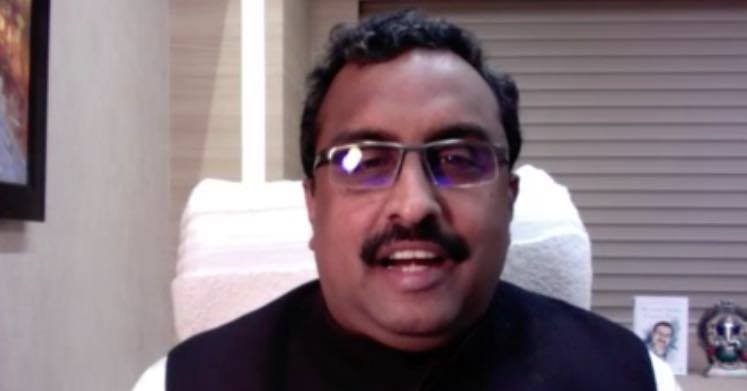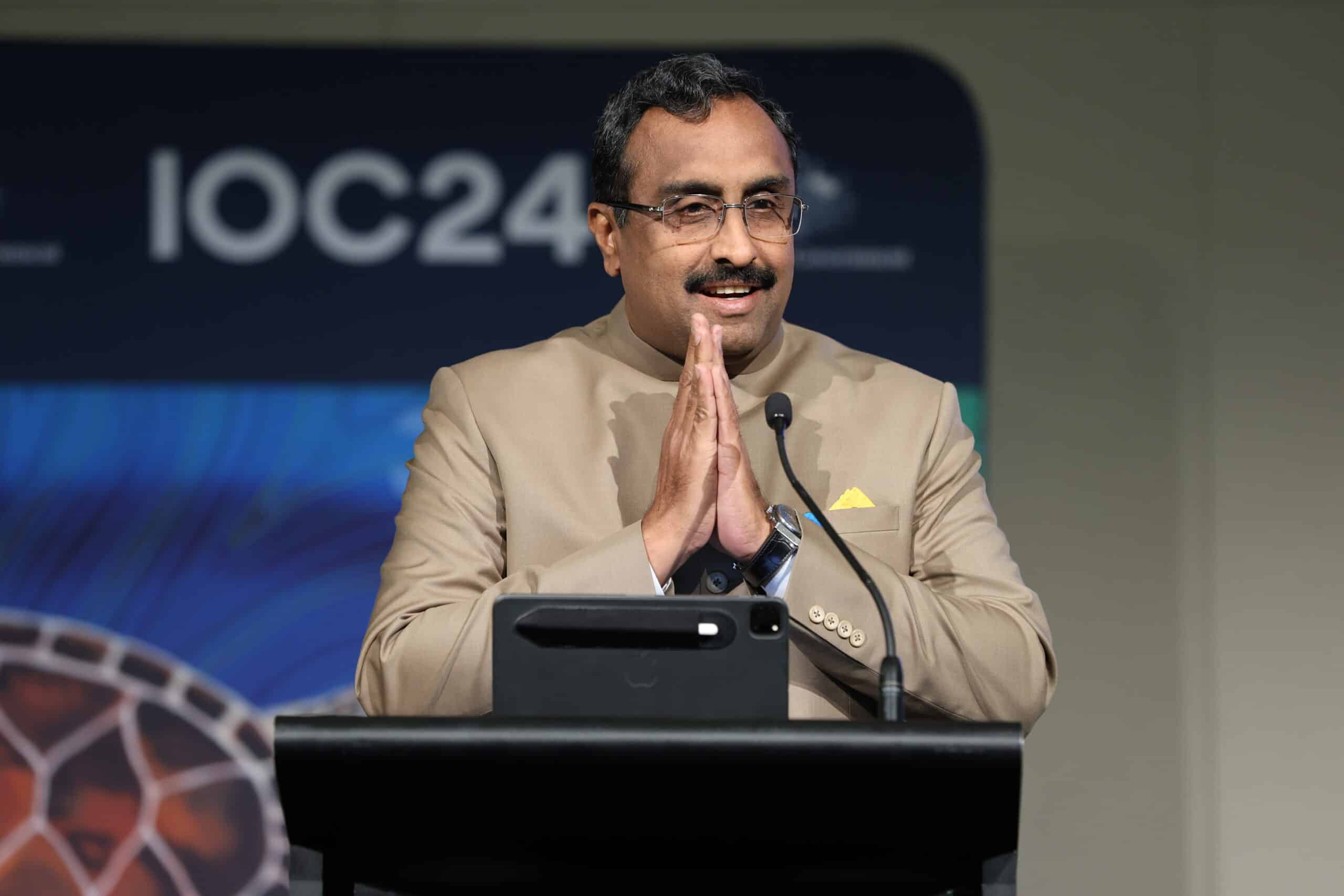
|
Getting your Trinity Audio player ready...
|
Text of Shri Ram Madhav’s Keynote Address at International Conference (Virtual) on “Ideology and Vision of Mahatma Gandhi: Global Relevance in 21st Century” organised by Panjab University in association with India Foundation, Nottingham University and Nottingham Trent University on 1-3 February, 2021.
I congratulate Punjab University for hosting the conference on “Relevance of Gandhi in the 21st Century” on the occasion of the 150th Birth Anniversary of Mahatma Gandhi.
The real issue in present times is not about the relevance of Gandhi. He is always relevant. Dr Martin Luther King Jr had once said “If humanity is to progress, Gandhi is inescapable. He lived, thought, and acted, inspired by the vision of humanity evolving toward a world of peace and harmony. We may ignore him at our own risk”
The question really is whether we, the humanity is prepared for him. We were not prepared for Gandhi at the time of our independence, nor did we betray any signs of preparedness post the independence. Seven decades after the independence and when we celebrate Gandhi’s 150th Birth Anniversary, we should introspect as to whether the nation is ready to accept and follow Gandhi and Gandhism.
Gandhi and Gandhism are easy to evaluate but difficult to emulate. The core of Gandhism are Truth and Non-violence. These are the qualities of a courageous leader. One quality that distinguished Gandhi from others was his fearlessness. He never bothered about political correctness. Absolute commitment to truth gave him absolute courage. “The essence of his teaching was fearlessness and truth. The voice was something different from others. It was quiet and low, and yet it could be heard above the shouting of the multitude. Behind the language of peace and friendship, there was power and a determination not to submit to the wrong,” said Nehru once.
We lacked that courage at the time of independence. That is why Gandhi, who singularly influenced entire independence movement, couldn’t have a greater say in post-independence India. Gandhi is worshipped but not followed, admired but not adopted.
National consciousness:
Gandhi’s belief in Hindu-Muslim unity was not merely a political program. It was the truth for him. “I will say that if there is anything like god or truth on earth, Hindu-Muslim unity is also possible”, he insisted. For him, Hindus, Muslims and many others together constituted one great nation of India. “How can you be different”, he pleaded with Muslim countrymen. “Should we not remember that many Hindus and Mahomedans own the same ancestors and the same blood runs through their veins? Do people become enemies because they change their religion?”, he asked them. When the question of partitioning of India came up, Gandhi was shattered. “Vivisect me before vivisecting this nation”, he cried out. Against the wishes of many senior Congress leaders of that time, he went up to Jinnah with folded hands, called him ‘Quaid-e-Azam’ – Great Leader, and requested him to take over the reins of power, but not divide India. Some called it Gandhi’s weakest hour. Not really. That was the manifestation of his courage of truth – Satyaagraha.
Jinnah knew that very well. He was scared of the power of the soul force of Gandhi’s truth, hence rejected the proposal. While we were celebrating independence on August 15, 1947, Gandhi was far away from it, busy soothing the broken souls in Noakhali first, where Hindus were the victims, and in Bihar next, where the victims were Muslims.
We got busy with making of the Indian Constitution. Meanwhile, Gandhi fell to the bullets of a fanatic. With Gandhi, his courage too disappeared. Gandhi’s truth started eluding us. We did not dare call ourselves one nation in our Constitution. We instead called ourselves – “We, the People of India” in the Preamble. And India was described as a “Union of States” in Article 1. Makers of the Constitution argued, perhaps rightly, that there was no ‘national consciousness’ prevalent in the Indian masses. All that they had was ‘caste consciousness’.
Seven decades later, the spirit of national oneness and consciousness seems to have returned to this land. The civilisational and cultural identity of one nationhood has much greater salience with the people of India today than in the past.
Ram Rajya:
Gandhi wanted independent India to be a Ram Rajya. He did not mean a theocratic state, but a state where the ‘voice of the voiceless’, as President Obama called it, will resonate in governance. We opted for democracy – the best available form of governance. Gandhi had the fear that in a country like India, majoritarian democracy could turn into a mobocracy. Democracies in their formatives ages in Greek cities were brutal. In the absence of any wise balancing, mobs became rulers. Eminent Greek philosopher Socrates was given death punishment for treachery by an open court in which thousands of Athenians were present. Plato was forced to describe that democracy as a kleptocracy.
Democracies have matured over centuries. Elected majoritarianism gave way to building of unelected agencies for effective balancing. Supreme Courts, media and other unelected agencies were created to play a balancing role. While ‘government by majority’ remains the bedrock of democracy, majoritarianism was deemed undemocratic. Non-majorities were sought to be protected from majoritarian overreach through constitutional and legal instruments.
Gandhi’s Ram Rajya was about providing voice to the non-majorities. Obama liked Gandhism precisely for that reason. At a time when democracies world over are coming under severe challenge and parliamentary majorities are being disregarded by non-majorities, we need to search for answers in Gandhi’s idea of Ram Rajya – a people-centric governance.
Non-violence:
In the last century non-violence was the greatest and only original political philosophy offered by India to the world. Credit goes to Gandhi. He experimented with it throughout his public life, from South Africa to India. He continuously improved it and finally succeeded in not only driving out the British from the Indian soil but also offering an excellent political weapon to many embattled nations. After India’s success in achieving independence many countries in the world turned to the same program. Leaders like Martin Luther King Jr in America, Nelson Mandela in South Africa, Lech Walesa in Poland and Aung San Su Kyi in Myanmar have all resorted to the Gandhian technique for securing their own political objectives. Many had openly declared their admiration for Gandhi.
But Gandhi’s non-violence was not just a political program; it was a profound philosophy with roots in the ancient Hindu scriptures. ‘Ahimsa paramo dharmah’ proclaimed Krishna in Bhagwad Gita. Violence doesn’t mean physical harm alone. Any action that causes disturbance in the orderly functioning of man and society is violence. It includes violation of laws to causing emotional distress. Gandhi used non-violence and satyagraha as passive resistance. He willingly cooperated with the British on several occasions too, when he saw that larger good of humanity was at stake.
That’s why Dr. Ambedkar in his concluding address to the Constituent Assembly on November 25, 1949 warned that constitutional recourse should be the only way after independence. “If you wish to maintain democracy not merely in form, but also in fact, …. the first thing in my judgement we must do is to hold fast to constitutional methods of achieving our social and economic objectives. It means that we must abandon the bloody methods of revolution. It means that we must abandon the method of civil disobedience, non-cooperation and satyagraha. These methods are nothing but the grammar of anarchy”, Ambedkar had warned.
Contrary to Ambedkar’s warning, we continue to deploy those methods, which were essentially used by Gandhi in his fight against the ‘cruel foreign ruler’, the British. By deploying the very same methods against our own governments, we are actually going against the Gandhian spirit.
Gandhism today:
Gandhi is a political expediency for many, and Gandhism just a facade. Gandhism is not about externals like the spinning wheel or Khadi. “If Gandhism means simply mechanically turning the spinning wheel, it deserves to be destroyed,” Gandhi himself demurred once. Gandhism is about truth, transparency, non-violence, openness to criticism, fearlessness, and rejection of political correctness and image consciousness. For independent India, constitutionalism and rule-abidingness are the real Gandhism.
It is that spirit, which lies in truthful conviction about the universal oneness, non-violent constitutionalism, and service of the voiceless for invoking what Vaclav Havel called as the ‘power of the powerless’, that should be the Gandhian way for this century. Are we ready for that?




Good speech, sends a valuable message on what Gandhi ji stood for.